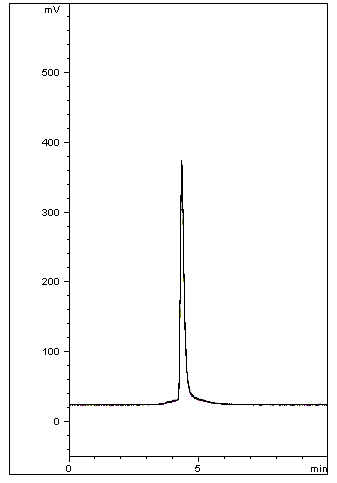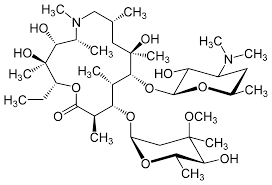Retention of Macrolide Antibiotic
Azithromycin has weak UV absorbance and typical asymmetric peak profile with low Column efficiency in many HPLC-UV methods. This ELSD Method shows good retention and peak shape along with excellent sensitivity. This method is very reproducible with %RSD values less than 0.1%, as shown in the 10 injection overlay below.
Method Conditions
Column: Cogent Bidentate C8™, 4µm, 100Å
Catalog No.: 40008-10P
Dimensions: 4.6mm x 100mm
Mobile Phase:
A: Isopropanol
B: Acetonitrile / 0.1% Triethylamine (TEA) (v/v)
Gradient:
| Time (minutes) | %B |
| 0 | 100 |
| 1 | 100 |
| 2 | 85 |
| 3 | 85 |
| 4 | 100 |
| 5 | 100 |
Flow rate: 1.0 mL/minute
Detection: ELSD (Evaporative Light Scattering Detector) Gain: 9; Temperature: 80°C;
Injection vol.: 1μL
Sample Preparation: Reference standards (1 mg/mL) in diluent of 50:50 Acetonitrile / DI Water (v/v)
t0: 1.50 Minutes
K’: 2
Note: Azithromycin is a semi-synthetic macrolide Antibiotic of the Azalide class. Azithromycin inhibits bacterial protein synthesis by binding to the 50S ribosomal subunit of the bacterial 70S ribosome.
Note 2: Capacity is determined using the following equation: k = (tR-tO)/tO
- tR = Retention Time of an Analyte Peak
- tO = Retention Time of non-Retained Peak




